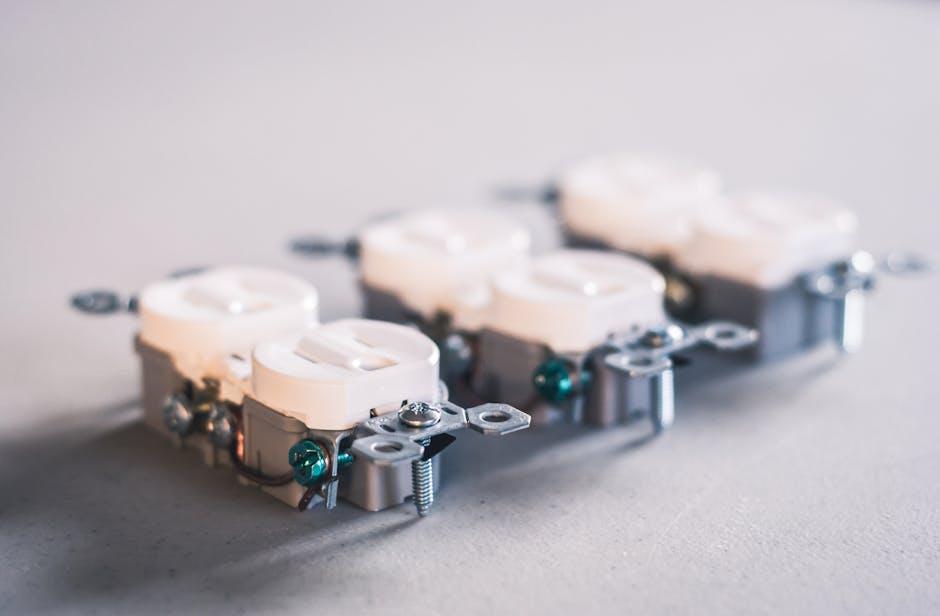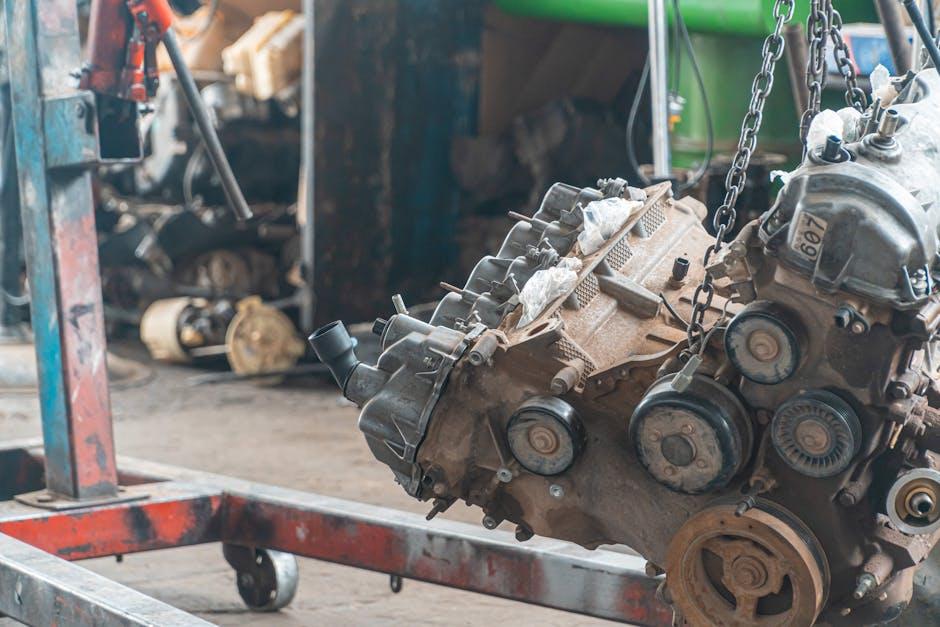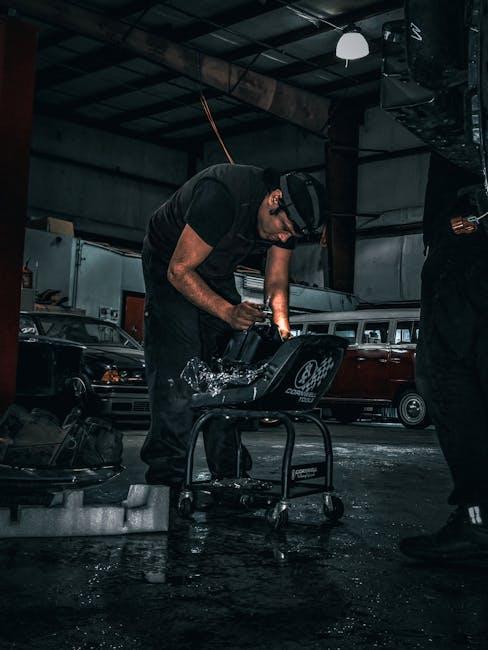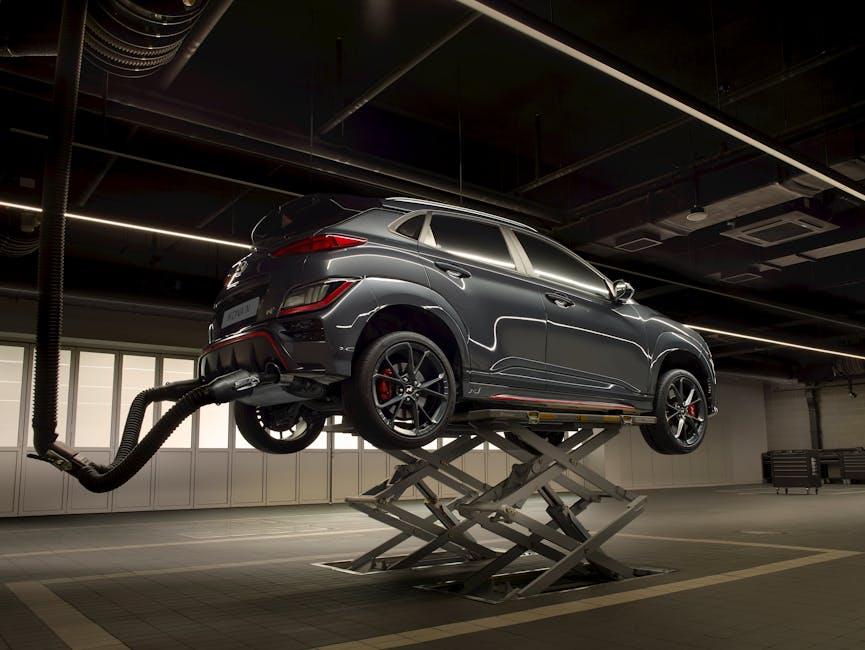As the miles accumulate on the odometer, a car’s suspension endures a relentless symphony of bumps, dips, and turns—each leaving subtle imprints on its performance and comfort. For high-mileage vehicles, suspension repair transforms from a routine maintenance task into a crucial rite of passage, restoring balance and ensuring safety on every journey. This article delves into the art and science of suspension repair for these seasoned road warriors, exploring how thoughtful maintenance can breathe new life into aging cars and keep them handling like they did on day one.
Table of Contents
- Understanding the Impact of Wear on Suspension Components
- Identifying Early Signs of Suspension Failure in High-Mileage Vehicles
- Choosing the Right Replacement Parts for Durable Performance
- Effective Techniques for Inspecting and Repairing Suspension Systems
- Balancing Cost and Quality in Suspension Repairs
- Maintaining Suspension Health for Long-Term Vehicle Stability
- Q&A
- Insights and Conclusions

Understanding the Impact of Wear on Suspension Components
Daily driving and time take a toll on suspension parts, gradually eroding their performance and safety. Components such as shock absorbers, ball joints, and bushings experience continuous stress that leads to wear, causing vibrations, uneven tire wear, and compromised handling. The degradation is often subtle initially but can accelerate quickly, affecting the vehicle’s overall dynamics and comfort. Recognizing the signs early can prevent costly repairs and ensure a smoother ride.
Common symptoms indicating worn suspension parts include:
- Increased body roll during turns
- Unusual noises over bumps or rough roads
- Lowered vehicle stance or sagging on one side
- Steering wheel vibrations or drifting
| Component | Wear Effect | Repair Urgency |
|---|---|---|
| Shock Absorbers | Reduced damping, bouncy ride | High |
| Ball Joints | Steering looseness, noise | Medium |
| Bushings | Vibration, misalignment | Medium |
| Control Arms | Instability, uneven tire wear | High |

Identifying Early Signs of Suspension Failure in High-Mileage Vehicles
Recognizing early indicators of suspension issues can save you from costly repairs down the road. Pay close attention to unusual noises such as clunks or creaks, especially when driving over bumps or during turns. These sounds often signify worn-out bushings or shock absorbers. Additionally, an uneven ride height or a noticeable lean when parked can indicate sagging springs. High-mileage vehicles are particularly vulnerable as wear and tear accumulate, meaning routine checks become crucial for maintaining safety and comfort.
Other subtle symptoms to monitor include:
- Vibrations: Steering wheel vibrations while driving at highway speeds.
- Braking instability: The car pulls to one side when braking.
- Tire wear: Uneven tire tread patterns, often caused by misalignment from suspension failure.
- Handling: A noticeably rough or bouncy ride that feels out of the ordinary.
| Suspension Symptom | Possible Cause | Recommended Action |
|---|---|---|
| Clunking noises | Worn bushings or ball joints | Inspect and replace damaged parts |
| Vehicle leaning | Sagging springs | Spring replacement |
| Steering vibrations | Damaged shocks | Shock absorber service |
| Uneven tire wear | Alignment issues | Professional alignment check |

Choosing the Right Replacement Parts for Durable Performance
When working on suspension repairs, especially for vehicles that have racked up significant mileage, the selection of replacement parts can make all the difference between a temporary fix and a long-lasting solution. Opt for components that combine high-quality materials with proven design integrity. This often means choosing parts from trusted manufacturers who specialize in OEM or aftermarket parts engineered for longevity and consistent performance. Consider factors such as corrosion resistance, material strength, and compatibility with your specific make and model to ensure seamless integration and durability under daily driving conditions.
Keep in mind that durable performance hinges not only on the individual part but also on how these components function as a system. To facilitate an informed decision, use the following checklist as a guide:
- Material Composition: Steel, aluminum, or composite materials.
- Warranty Period: Longer warranties often indicate greater confidence in product durability.
- Design & Engineering: Parts specifically designed to reduce wear and tear.
- Price vs. Quality Balance: Avoid cheap options that can cost more in the long run.
| Part Type | Recommended Material | Typical Lifespan | Price Range |
|---|---|---|---|
| Shock Absorbers | Hydraulic steel | 50,000 – 70,000 miles | $$$ |
| Control Arms | Aluminum alloy | 70,000 – 100,000 miles | $$ |
| Ball Joints | Forged steel | 60,000 – 90,000 miles | $$ |
| Coil Springs | Spring steel | 70,000 – 100,000 miles | $$$ |

Effective Techniques for Inspecting and Repairing Suspension Systems
Maintaining the suspension system of high-mileage vehicles demands a meticulous approach that blends thorough inspection with precision repair. Start by visually examining key components such as shocks, struts, control arms, and bushings for any signs of wear, cracks, or leakage. It’s essential to perform functional checks, including bounce tests and wheel alignment assessments, to detect abnormalities in damping and steering response. Additionally, utilizing diagnostic tools like electronic suspension testers can provide valuable insights into the real-time performance of the suspension, uncovering hidden issues often missed by manual inspection.
Once faults are identified, prioritize repairs based on their impact on safety and vehicle handling. Replacing worn-out shock absorbers or damaged bushings can dramatically restore ride quality. When servicing high-mileage vehicles, consider upgrading to aftermarket components designed for durability and enhanced performance. Below is a comparison table highlighting common suspension parts alongside their recommended service intervals and typical lifespan:
| Component | Recommended Service Interval | Average Lifespan (Miles) |
|---|---|---|
| Shock Absorbers | Every 50,000 miles | 40,000 – 60,000 |
| Control Arm Bushings | Inspect every 30,000 miles | 30,000 – 50,000 |
| Struts | Replace every 60,000 miles | 50,000 – 70,000 |
| Ball Joints | Inspect annually | 50,000 – 70,000 |
Proactive maintenance and timely part replacements not only preserve the vehicle’s handling dynamics but also prevent costly breakdowns down the road. Employ a combination of visual, mechanical, and electronic inspection techniques to keep your suspension system resilient and responsive despite high mileage accumulation.

Balancing Cost and Quality in Suspension Repairs
When it comes to suspension repairs on high-mileage vehicles, finding the sweet spot between cost-effectiveness and lasting quality requires a strategic approach. Instead of opting for the cheapest parts available, focus on durability and compatibility with your car’s specific make and model. Often, investing in premium aftermarket components or certified rebuilt parts can extend the life of your suspension more than a quick-fix replacement, ultimately saving money on frequent repairs.
Consider the following factors before committing to any suspension repair:
- Material quality: Choose parts made from high-grade alloys or reinforced composites to withstand the rigors of prolonged use.
- Warranty coverage: Longer warranties often signal manufacturer confidence and reduce future expenses.
- Labor costs: Balancing between expert mechanics and local garages can influence final pricing without compromising quality.
- Signs of wear: Selective replacement of worn components, rather than full assemblies, can optimize expense versus performance.
| Repair Option | Estimated Cost | Expected Longevity | Quality Level |
|---|---|---|---|
| OEM Parts | $400 – $700 | 3-5 years | High |
| Aftermarket Premium | $250 – $500 | 2-4 years | Medium-High |
| Certified Rebuilt | $150 – $350 | 1-3 years | Medium |
| Economy Parts | $75 – $200 | <1.5 years | Low |

Maintaining Suspension Health for Long-Term Vehicle Stability
Keeping your car’s suspension in top shape is crucial as the miles pile on. Components like shocks, struts, and bushings endure constant wear from rough roads and daily use, which can lead to decreased ride comfort and compromised handling. Regular inspections provide an opportunity to catch early signs of trouble before they escalate into costly repairs or safety hazards. Pay close attention to symptoms such as uneven tire wear, excessive bouncing, or a drifting steering wheel, all of which signal the need for suspension attention.
Practical maintenance tactics can extend the life of your suspension system significantly. Here are some key practices to adopt:
- Routine Visual Checks: Look for leaks, cracks, and damage to suspension parts every 6,000 miles.
- Alignment and Balancing: Ensure wheels are aligned and balanced to reduce uneven stress on suspension components.
- Replace Worn Parts Promptly: Swapping out old shocks, bushings, or ball joints as they wear helps maintain stability and ride quality.
- Maintain Proper Tire Pressure: Correct tire pressure minimizes impact stress and protects suspension longevity.
| Suspension Part | Common Issue | Suggested Service Interval |
|---|---|---|
| Shock Absorbers | Leaking fluid, reduced damping | Every 50,000 miles |
| Ball Joints | Excessive play, noise | Inspect every 30,000 miles |
| Bushings | Cracks, degradation | Every 40,000 miles |
Q&A
Q&A: Suspension Repair for High-Mileage Cars
Q1: Why does suspension repair become essential for high-mileage cars?
A1: Over time, the suspension components of a car endure constant stress from road conditions, weight, and driving habits. In high-mileage vehicles, parts like shocks, struts, bushings, and ball joints often wear out, leading to reduced ride quality, handling issues, and potential safety concerns. Repairing or replacing these components restores stability and comfort.
Q2: What signs indicate that a high-mileage car needs suspension repair?
A2: Common warning signs include excessive bouncing, uneven tire wear, pulling to one side, unusual noises (creaking or clunking), and a generally rough ride. If you notice any of these, it’s a good idea to have the suspension inspected to prevent further damage.
Q3: Is suspension repair more challenging or costly for high-mileage vehicles?
A3: It can be. Older cars might have worn or corroded parts that are harder to remove or replace. Additionally, sourcing certain components for less common or very old models might be difficult or expensive. However, maintenance costs can be managed through regular inspections and timely repairs.
Q4: Can DIY suspension repair be a viable option for high-mileage cars?
A4: For those with mechanical skills and proper tools, basic suspension repairs like replacing shocks or bushings can be tackled at home. However, complex issues involving alignment or structural components are best handled by professionals to ensure safety and performance.
Q5: How does proper suspension repair affect the longevity of a high-mileage car?
A5: Correctly repairing the suspension can dramatically improve the vehicle’s handling and reduce excessive tire wear, helping to extend the life of other components. It also enhances driver comfort and safety, making the car more reliable for continued use.
Q6: What maintenance tips help prolong suspension health in high-mileage vehicles?
A6: Regular inspections, timely replacement of worn parts, maintaining proper tire pressure, and avoiding rough road surfaces when possible can all help keep the suspension system in good shape. Keeping an eye on fluid leaks and responding promptly to unusual noises is also beneficial.
Q7: When is it time to consider suspension system upgrades instead of repairs?
A7: If your high-mileage car’s suspension parts are repeatedly failing or if improved performance is desired, upgrading to modern components like advanced shocks or struts may be worthwhile. This can enhance ride quality and safety, especially if the car sees varied or demanding driving conditions.
This Q&A provides a balanced and informative look at suspension repair for high-mileage cars, helping drivers understand when and why to address their vehicle’s suspension needs.
Insights and Conclusions
In the journey of high-mileage cars, suspension repair is more than just a maintenance task—it’s a revival of the ride’s comfort, control, and safety. As miles continue to mount, giving attention to this vital system ensures that every twist and turn on the road feels secure and smooth. Whether you choose DIY fixes or professional care, investing in your car’s suspension today means prolonging its life and preserving the joy of driving tomorrow. After all, every well-maintained suspension is a silent promise that your trusted vehicle can keep moving forward, mile after mile.
